In Windows 10, updates are installed automatically in the background to improve system stability and security. But sometimes, Microsoft releases bad updates that causes many problems on the system, so there is the need to uninstall these updates to bring our computer back to operation again.
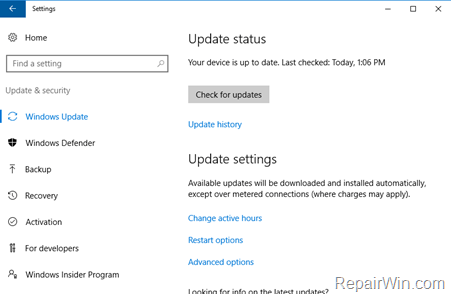
There are two types of updates in Windows 10 :
1. Typical Updates. These type of Windows 10 updates, commonly are “small” in download size and includes improvements for the operating system, the latest definitions for Windows Defender and – if available – the updated drivers for the installed devices. This type of updates can be uninstalled easy from “Update and Security” options or from “Programs & Features” in Control Panel.
2. Major Updates: The other type of updates in Windows 10 are called “builds” because they are contain a serious set of fixes and improvements for the operating system and they have “big” download size. “Builds” can be uninstalled, only from “Update and Security” options and only if the period of their installation does not exceed the ten (10) days.
- Related article: How to prevent an Update or Driver from been installed in Windows 10.
This tutorial contains detailed instructions to uninstall updates in Windows 10.
How to Uninstall Windows 10 Updates & Builds.
- Part 1. Uninstall Typical Windows 10 Updates.
- Part 2. Uninstall Windows 10 Builds.
- Part 3. Uninstall Windows 10 Updates & Builds by using System Restore.
Part 1. How to Uninstall Typical Windows 10 Updates.
– In order to uninstall a typical Windows Update in Windows 10:
Method 1. Uninstall Updates From Program and features.
1. Right-click at the Start menu ![]() and choose Control Panel.
and choose Control Panel.
2. Set the View By: to Small icons and click Program & Features.
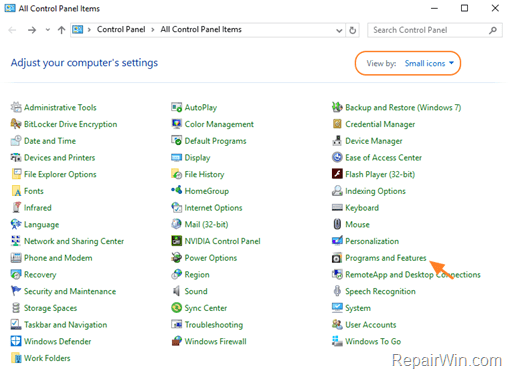
3. Click View installed updates on the left pane.
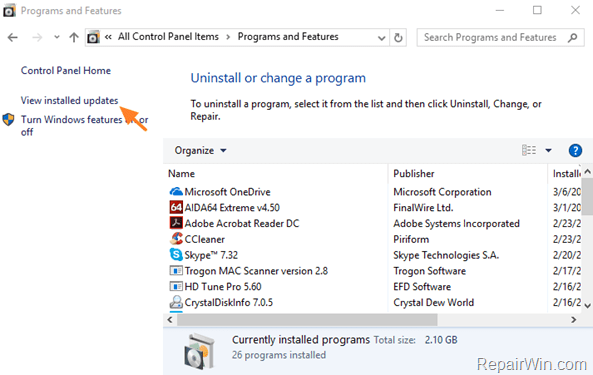
4. Select (or search) the update that you want to remove, and click Uninstall.
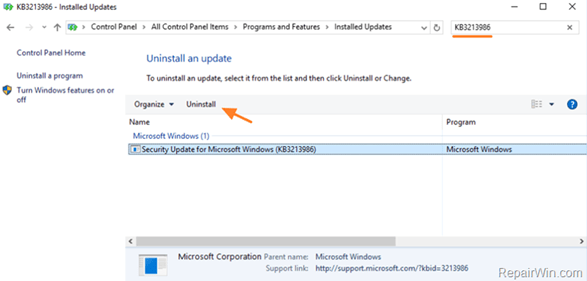
5. When the uninstall process is completed restart you computer to apply changes.
Method 2. Uninstall Updates from Update and security options.
1. From the Start ![]() menu choose Settings
menu choose Settings ![]() and then click Update & security.
and then click Update & security.
2. At Windows Update options, select Update history.
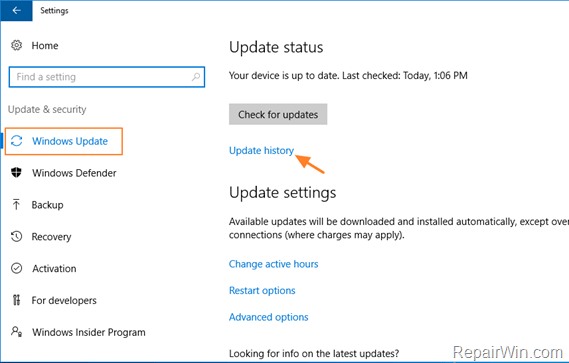
3. Then choose Uninstall updates.
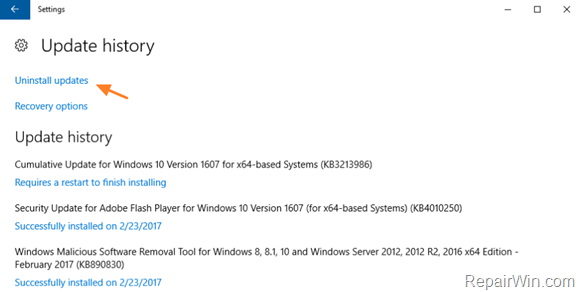
4. Select the Windows update that you want to remove, and click Uninstall.
Part 2. How to Uninstall Windows 10 Builds.
– To uninstall a Windows 10 Build:
1. From the Start ![]() menu choose Settings
menu choose Settings ![]() and then click Update & security.
and then click Update & security.
2. Choose Recovery on the left and then press the Get started button, under the “Go back to an earlier build” section. *
* Note: If the “Get started” option is grayed out, that means that you cannot uninstall the latest installed build from here. At this case you can try to use the System Restore to restore your computer to a previous working state. (See Part 3 below).
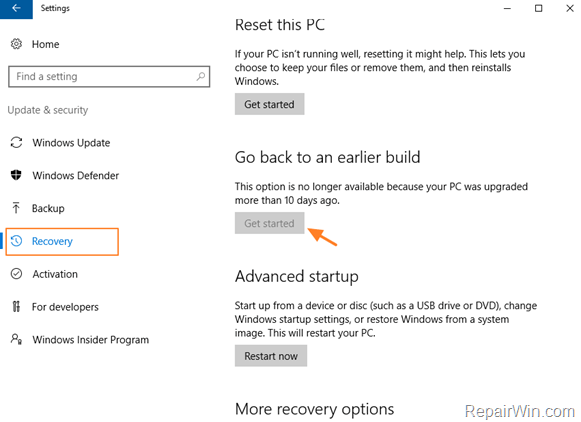
Part 3. Remove Windows Updates with System Restore.
– The final way to remove a “build” or updates in Windows 10, is to use the System Restore feature and restore your System to a previous state. To do that:
1. Press Windows ![]() + R keys to open the run command box.
+ R keys to open the run command box.
2. Type rstrui & click OK.
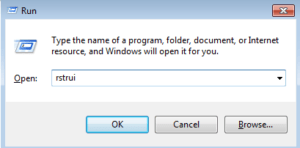
3. Click Next at the first screen.
3. Choose an earlier working state (Date/Time) and click Next to start the restore process.
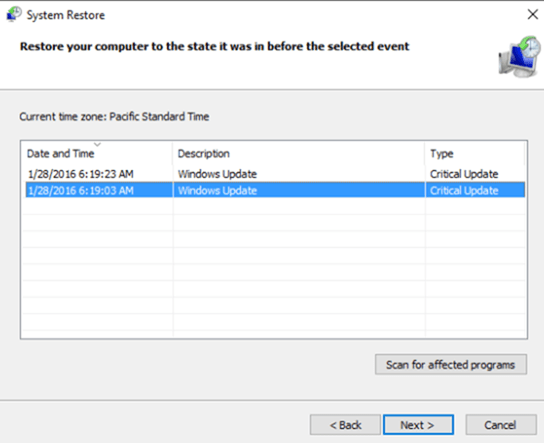
That’s all! Did it work for you?
Please leave a comment in the comment section below or even better: like and share this blog post in the social networks to help spread the word about this solution.
Bài liên quan
- FIX: Error 0x81000203 in System Restore. (Solved)
- Cannot Access Shared folder. User has not been granted the requested logon type at this computer. (Solved)
- FIX: Cannot clear TPM – 0x80284001, 0x80290300 or 0x80290304.
- Unable to Schedule Teams Meeting in 15 or 10 minutes slots (Solved)
- How to Share Folder without Username/Password on Windows 10/11.
- FIX: Thunderbird High CPU or Memory Usage issues.

